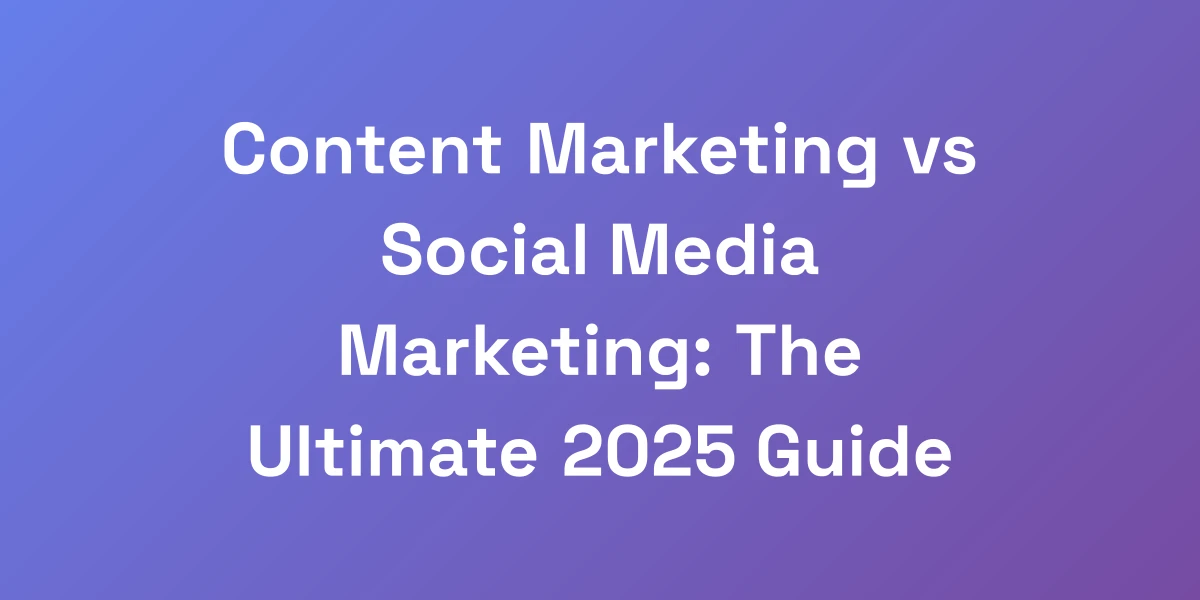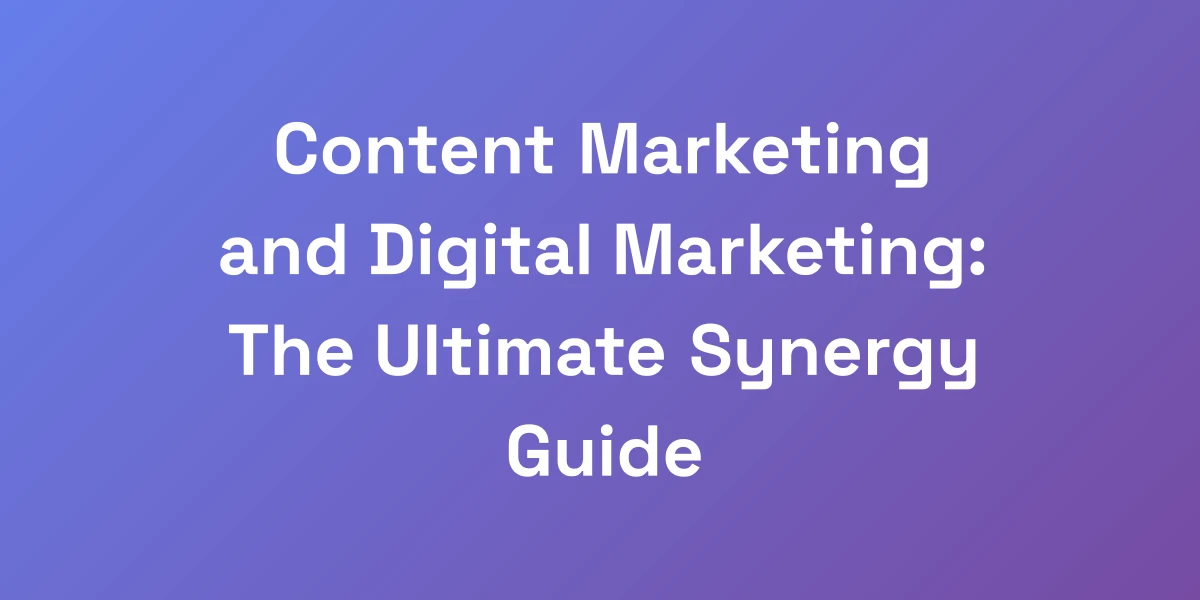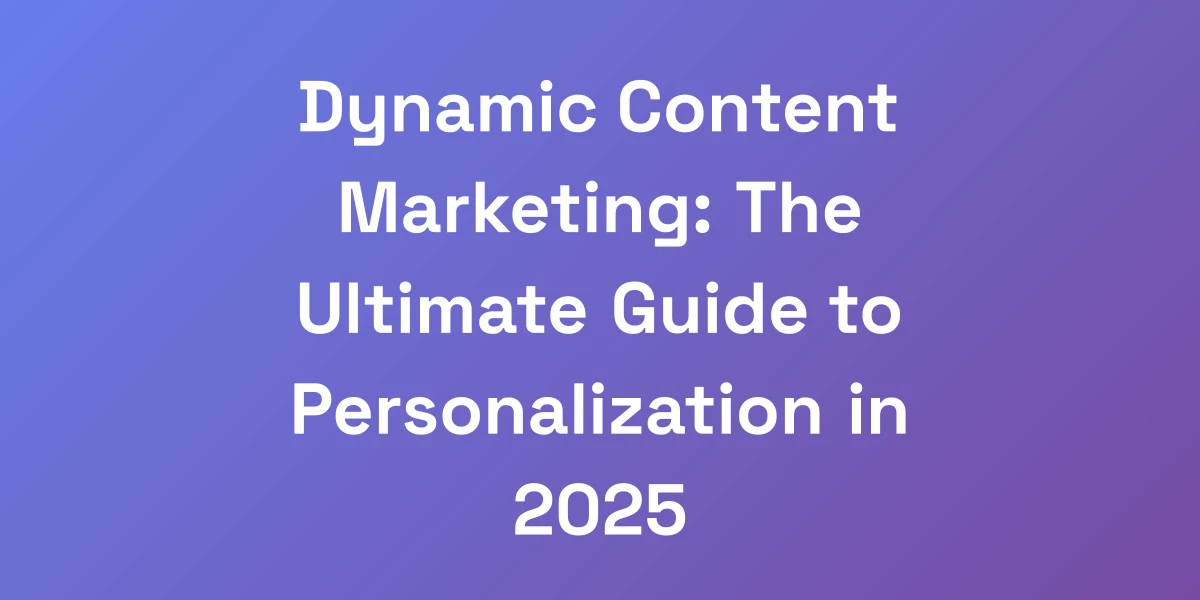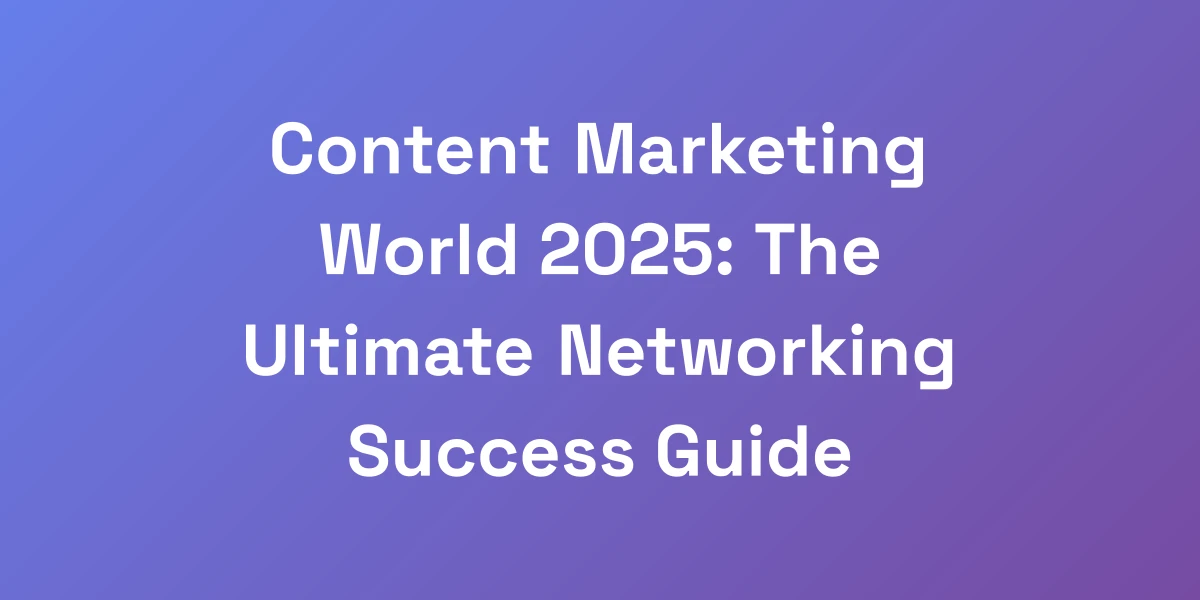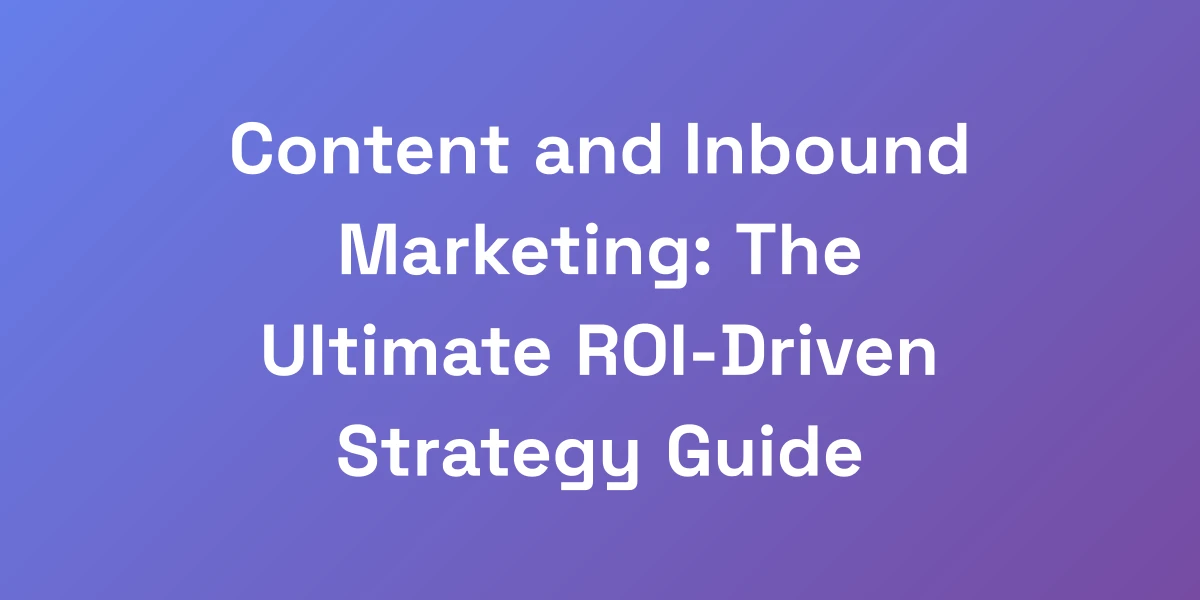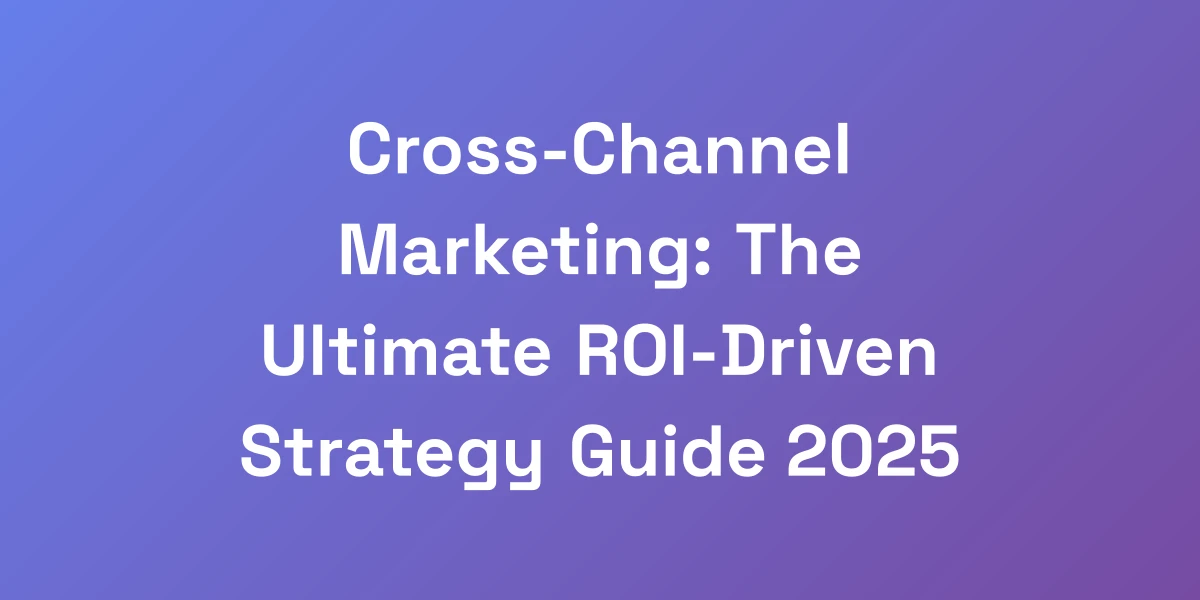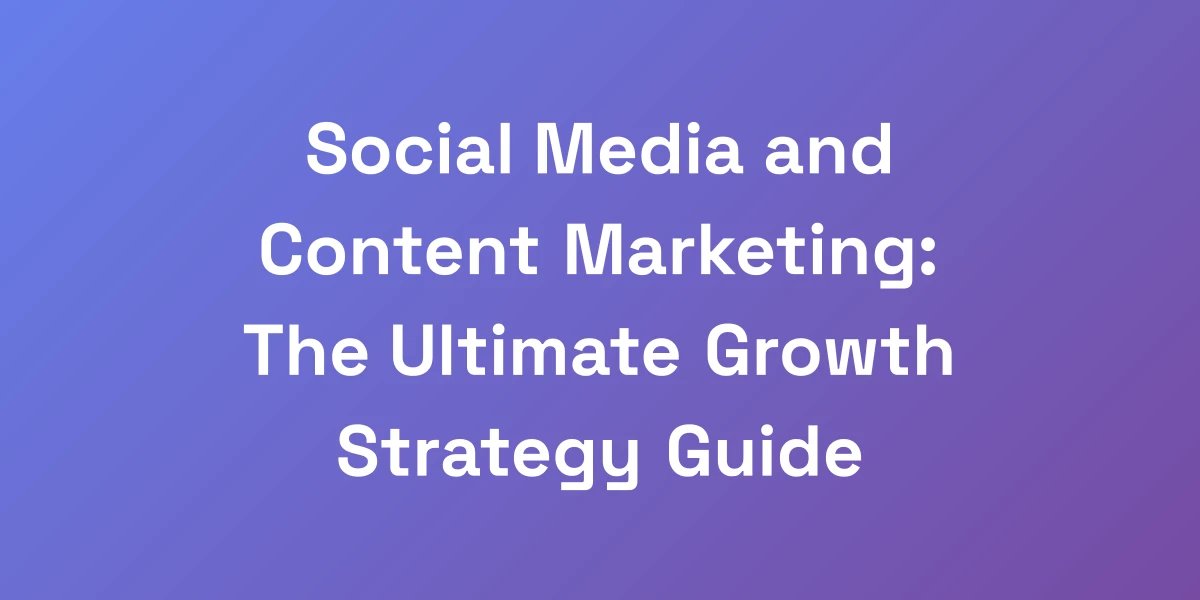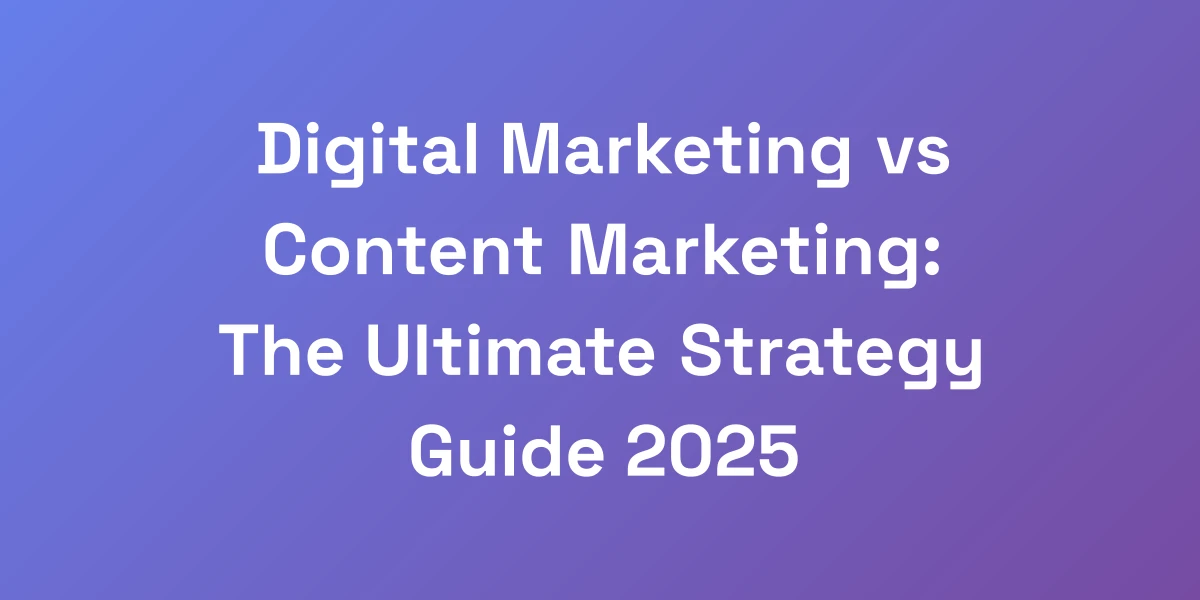
Digital Marketing vs Content Marketing: The Ultimate Strategy Guide 2025
Mar 1, 2025 | By [email protected]
Introduction
Have you ever wondered why some brands effortlessly capture your attention while others fade into the background?
The secret often lies in their understanding of digital marketing and content marketing. In a world overflowing with information, distinguishing your brand requires more than just flashy ads or catchy slogans.
We’re diving into the heart of these strategies to unveil how they can elevate your business in 2025.
But here’s the kicker: many businesses struggle to grasp the synergy between the two, leading to missed opportunities and stagnant growth.
Sound familiar? You’re not alone.
Let’s tackle these challenges head-on, exploring how blending digital marketing and content marketing can create a powerhouse strategy that not only attracts but also retains your audience.
Understanding the Digital Marketing Ecosystem
In today’s rapidly evolving digital landscape, understanding the relationship between digital marketing and content marketing has become crucial for business success. Digital marketing encompasses a vast array of online promotional activities, while content marketing serves as its powerful subset.
As someone who’s spent years optimizing both approaches, we’ve discovered that the key to success lies in recognizing how these two strategies complement each other rather than viewing them as competing methodologies.
Let’s dive deep into the digital marketing ecosystem and explore how these elements work together to create a comprehensive marketing strategy.
For more insights on the differences and synergies between these two approaches, check out this comprehensive comparison between content marketing versus digital marketing.
The Evolution of Digital Marketing
Digital marketing has come a long way since the early days of banner ads and email blasts. Today, it’s a sophisticated blend of various channels and technologies designed to reach consumers where they spend most of their time: online.
Remember when SEO was just about keyword stuffing? Now, it’s a complex strategy involving user intent, semantic search, and AI-driven algorithms.
One significant milestone in this evolution is the shift towards personalization. Consumers now expect tailored experiences, pushing marketers to leverage data and analytics like never before. According to the latest digital marketing trends, personalization is a key driver of consumer engagement.
This transformation reflects a broader trend of integrating technology with creativity, ensuring that marketing efforts are both effective and engaging.
Key Components of Digital Marketing
At its core, digital marketing includes several key components that work together to drive brand awareness, engagement, and conversions.
- Search Engine Optimization (SEO): Enhances your website’s visibility on search engines, driving organic traffic. For specialized strategies in sectors like financial services, refer to SEO for Financial Services: A Bulletproof Guide for 2025 Success.
- Pay-Per-Click (PPC) Advertising: Offers immediate visibility through paid ads, targeting specific audiences.
- Social Media Marketing: Engages with audiences on platforms like Facebook, Instagram, and LinkedIn.
- Email Marketing: Delivers personalized messages directly to consumers’ inboxes.
- Content Marketing: Focuses on creating valuable content to attract and retain customers.
Each component plays a unique role but thrives on integration, making the overall strategy more robust and effective.
The Role of Data Analytics
Data is the lifeblood of digital marketing. It provides insights that inform every decision, from which channels to prioritize to what content resonates most with your audience.
With tools like Google Analytics and advanced CRM systems, marketers can track user behavior, measure campaign performance, and refine strategies in real-time.
Imagine running a campaign without understanding which ads are converting or which keywords are driving traffic. It’s like navigating a ship without a compass.
Data analytics not only guide your marketing efforts but also highlight areas for improvement, ensuring that every dollar spent contributes to your goals. For detailed digital marketing ROI statistics, refer to our latest research.
Modern Digital Marketing Channels
The digital landscape is teeming with channels, each with its own strengths and ideal use cases.
- Social Media: Platforms like Instagram and TikTok are perfect for visual storytelling and engaging younger audiences.
- Search Engines: Google remains a dominant force, making SEO and PPC essential for visibility.
- Email: Still one of the highest ROI channels, email marketing personalizes communication at scale.
- Content Platforms: Blogs, podcasts, and video channels like YouTube empower brands to educate and entertain.
- Affiliate Marketing: Partners help promote your products, expanding your reach through their networks.
Choosing the right mix of channels depends on your target audience, goals, and the resources available. It’s about finding the perfect balance that amplifies your message across multiple touchpoints.
Measuring Digital Marketing Success
How do you know if your digital marketing efforts are paying off? The answer lies in carefully selected metrics and KPIs.
- Conversion Rate: Measures the percentage of visitors who take a desired action, like making a purchase.
- Return on Investment (ROI): Calculates the financial return compared to the marketing spend.
- Customer Acquisition Cost (CAC): The cost associated with acquiring a new customer.
- Engagement Metrics: Includes likes, shares, comments, and time spent on content.
- Traffic Sources: Identifies where your visitors are coming from, helping to allocate resources effectively.
Regularly analyzing these metrics helps in adjusting strategies, ensuring continuous improvement and alignment with business objectives. For an in-depth look at B2B content marketing benchmarks and trends for 2024, consult the latest research.
Content Marketing: The Heart of Digital Strategy
Content marketing isn’t just another digital marketing tactic – it’s the foundational element that powers successful digital campaigns. Through our experience in building a multi-million subscriber YouTube channel, we’ve learned that creating valuable, engaging content is what truly drives sustainable growth.
Content marketing focuses on building long-term relationships with your audience through meaningful interactions, rather than just pushing for immediate sales.
This approach has revolutionized how businesses connect with their target audience and has become increasingly crucial in the digital age.
Our findings are supported by the 2023 Consumer Product Content Benchmark Report, which highlights the importance of content in consumer engagement.
Content Marketing Fundamentals
At its essence, content marketing is about providing value. Whether it’s through informative blog posts, engaging videos, or insightful podcasts, the goal is to offer something that meets your audience’s needs.
Unlike traditional marketing, which often interrupts with ads, content marketing earns attention by being relevant and helpful.
This strategy fosters trust and credibility, making your audience more likely to engage with your brand and eventually convert.
For example, a fitness brand might share workout tips or nutritional advice, positioning itself as a trusted authority rather than just a seller of products.
Types of Content That Drive Results
Content comes in many forms, each suited to different goals and audience preferences.
- Blog Posts: Ideal for SEO and providing in-depth information on topics relevant to your audience.
- Videos: Perfect for demonstrating products, sharing stories, or providing visual tutorials.
- Infographics: Great for presenting data and complex information in a visually appealing way.
- Podcasts: Offer a convenient way for audiences to consume content on-the-go, building a loyal following.
- eBooks and Whitepapers: Provide comprehensive information and insights, often used for lead generation.
Choosing the right type of content depends on where your audience is in their journey and how they prefer to consume information.
Content Strategy Development
Developing a content strategy is about planning and executing content that aligns with your business goals and resonates with your audience.
Start by defining your target audience. Who are they? What problems do they face? How can your content solve these problems?
Next, set clear objectives. Are you aiming to increase brand awareness, generate leads, or boost sales?
Once you have a clear understanding of your audience and goals, you can create a content calendar that outlines what content will be published, when, and on which channels.
Consistency is key. Regularly publishing quality content keeps your audience engaged and reinforces your brand’s message.
Content Distribution Channels
Creating great content is only half the battle. Distributing it effectively ensures it reaches the right people at the right time.
Popular distribution channels include your website, social media platforms, email newsletters, and third-party sites like Medium or LinkedIn.
Each channel has its own strengths and audience demographics, so it’s important to tailor your content for each platform.
For instance, visual content performs well on Instagram and Pinterest, while in-depth articles and professional insights are better suited for LinkedIn and your blog.
Additionally, leveraging SEO and paid promotion can greatly enhance the visibility and reach of your content.
Content Performance Metrics
Measuring the performance of your content is essential to understand its impact and guide future efforts.
- Time on Page: Indicates how engaged readers are with your content.
- Social Shares: Reflects how valuable and shareable your content is.
- Lead Generation: Measures how effectively your content is converting visitors into leads.
- Conversion Rates: Shows the percentage of readers who take a desired action after consuming your content.
Tracking these metrics helps you identify what’s working and what needs adjustment, ensuring your content strategy remains aligned with your goals.
For example, Tiger Fitness Inc. achieved a 60% returning customer rate by leveraging video content marketing, demonstrating the tangible benefits of effective content strategy.
Synergizing Digital and Content Marketing
The real magic happens when you effectively integrate content marketing within your broader digital marketing strategy. From our personal experience building multiple successful online businesses, we’ve found that the most powerful results come from creating a seamless blend of both approaches.
This integration allows you to leverage content marketing’s trust-building capabilities while maximizing reach through digital marketing channels.
The key is understanding how to align your content strategy with your digital marketing goals to create a cohesive and effective marketing ecosystem.
Creating an Integrated Marketing Strategy
An integrated marketing strategy ensures that all your marketing efforts work together towards common objectives. For specialized strategies for consultants, refer to SEO for Consultants: 7-Figure Client Acquisition Blueprint (2024).
Start by aligning your content and digital marketing goals. For instance, if your goal is to increase brand awareness, creating shareable content and promoting it through social media and PPC can amplify your reach.
Consistency in messaging across all channels strengthens your brand identity and makes your campaigns more effective.
Moreover, an integrated approach allows for better resource allocation, ensuring that you’re not duplicating efforts but instead complementing them. Check out these integrated marketing campaign examples for inspiration.
For example, Dunkin’s collaboration with Ben Affleck leveraged celebrity influence across multiple channels, creating a unified and impactful campaign.
Content Distribution Through Digital Channels
Effectively distributing your content across various digital channels maximizes its reach and impact.
Each channel has its unique way of engaging audiences, so it’s essential to tailor your content accordingly.
For example, visual content like infographics and videos perform exceptionally well on social media platforms, while detailed blog posts are ideal for your website and email newsletters.
Utilize SEO techniques to enhance the visibility of your content on search engines, driving organic traffic to your site.
Additionally, leveraging paid advertising can help amplify your content’s reach, targeting specific demographics and interests to ensure it lands in front of the right eyes.
Combining organic and paid strategies ensures a balanced approach that taps into both immediate and long-term growth opportunities.
Alignment of Goals and Metrics
Alignment of goals and metrics between your content and digital marketing strategies is crucial for cohesive performance tracking.
Define clear objectives for both content and digital marketing efforts and ensure they support each other.
For example, if your content strategy aims to educate your audience, your digital marketing goals might focus on driving traffic to informational blog posts and tracking engagement metrics such as time on page and social shares.
Using consistent metrics across both strategies allows for better analysis and optimization, providing a holistic view of your marketing performance.
This approach also helps in identifying which efforts are driving the most value, enabling you to pivot and adjust strategies as needed.
Cross-Channel Content Optimization
Optimizing your content across different channels ensures that it performs well wherever it’s published.
This involves adapting your content format and messaging to suit each platform’s unique requirements and audience preferences.
For instance, a blog post can be repurposed into a series of social media posts, infographics, or even a video, extending its lifecycle and reach.
Moreover, utilizing different SEO strategies tailored to each channel can enhance visibility and engagement. For example, optimizing video content for YouTube SEO is different from web SEO for blog posts.
By optimizing for each channel, you ensure that your content not only reaches a broader audience but also resonates more deeply with different segments.
Budget Allocation and ROI
Effective budget allocation is critical to maximize the return on investment (ROI) from your integrated marketing efforts.
Analyze the performance of each channel and allocate resources to those that deliver the highest ROI.
According to recent benchmarks, email marketing boasts an impressive ROI of 4,200%, making it a highly efficient channel for budget allocation.
SEO, with a 2,200% ROI, also stands out as a long-term investment that drives sustained organic growth.
On the other hand, PPC, while offering immediate returns at a 200% ROI, should complement your content strategies rather than dominate your budget.
Balancing your budget across high-ROI channels like email and SEO while integrating them with content-focused strategies ensures a well-rounded approach that maximizes overall effectiveness.
By continuously monitoring and adjusting your budget based on performance metrics, you can ensure each dollar spent contributes to your overarching marketing goals.
Advanced Implementation Techniques
Successfully implementing both digital and content marketing requires more than just understanding the basics – it demands mastery of advanced techniques and tools. Through years of experimentation and optimization, we’ve discovered that the most successful campaigns rely on sophisticated automation, AI-powered tools, and data-driven decision-making.
The key is to leverage technology while maintaining the human touch that makes content marketing so effective.
Let’s explore the cutting-edge techniques that can take your marketing strategy to the next level.
Marketing Automation Strategies
Marketing automation streamlines repetitive tasks, allowing for more efficient and effective campaign management. For insights into automating your SEO processes, check out SEO Automation in 2025: A Complete Guide to AI-Powered Success.
Automating email campaigns, social media posts, and lead nurturing processes frees up time to focus on strategy and creative efforts.
For example, setting up automated email workflows based on user behavior can nurture leads through personalized content, increasing the likelihood of conversion.
Additionally, automation tools can help schedule and optimize social media posts, ensuring consistent engagement with your audience without manual intervention.
By implementing marketing automation, you can enhance productivity, maintain consistent communication, and deliver a more personalized experience to your audience.
AI and Machine Learning Applications
AI and machine learning are revolutionizing digital marketing by enabling smarter, data-driven decisions. Discover advanced SEO strategies for specific industries, such as consulting, in SEO for Consultants: 7-Figure Client Acquisition Blueprint (2024).
AI-powered tools can analyze vast amounts of data to uncover patterns and insights that inform your marketing strategies.
For instance, predictive analytics can forecast customer behavior, allowing you to tailor your content and campaigns to meet their evolving needs.
AI also enhances content creation by generating personalized recommendations and automating tasks like content curation and optimization.
Moreover, chatbots powered by AI provide instant customer support, improving user experience and freeing up your team to handle more complex inquiries.
By integrating AI and machine learning into your digital marketing efforts, you can achieve greater efficiency, personalization, and effectiveness in your campaigns.
Personalization Techniques
Personalization is no longer a nice-to-have; it’s a necessity in today’s competitive landscape.
Consumers expect tailored experiences that cater to their specific needs and preferences.
Personalization techniques involve using data to create customized content, offers, and interactions for each user.
For example, dynamic content on your website can change based on the visitor’s location, behavior, or previous interactions, making the experience more relevant and engaging.
Personalized email campaigns that address recipients by name and offer content based on their interests have higher open and conversion rates.
Employing these techniques not only enhances user experience but also fosters deeper connections with your audience, leading to increased loyalty and conversions.
Advanced Analytics and Tracking
Advanced analytics go beyond basic metrics, providing deeper insights into user behavior and campaign performance.
Implementing tools like Google Analytics 4 or proprietary CRM systems allows you to track intricate details such as customer journeys, multi-touch attribution, and lifetime value.
These insights help you understand which channels and content are driving the most value, enabling more informed decision-making.
For example, tracking the customer journey from the first touchpoint to conversion can reveal which interactions are most influential, allowing you to optimize your strategy accordingly.
Advanced tracking also facilitates A/B testing, helping you refine your content and campaigns based on real-time data and results.
By leveraging advanced analytics, you can ensure your marketing efforts are data-driven and continually optimized for maximum impact.
Emerging Technologies in Marketing
Staying ahead in digital marketing means adopting emerging technologies that can enhance your strategy and provide a competitive edge.
Technologies such as augmented reality (AR), virtual reality (VR), and blockchain are beginning to make their mark in the marketing world.
AR and VR offer immersive experiences that can engage users in new and exciting ways, transforming how they interact with your brand.
Blockchain technology, on the other hand, can enhance transparency and security in digital transactions, building greater trust with your audience.
Additionally, the rise of voice assistants and IoT devices presents new avenues for reaching consumers, requiring innovative approaches to content and engagement.
For a comprehensive understanding of AI’s impact on SEO, refer to AI and SEO in 2025: Complete Guide to Dominate Search Rankings.
Integrating these technologies into your marketing strategy can create unique experiences that capture attention and differentiate your brand in a crowded marketplace.
Exploring and adopting these emerging technologies ensures that your marketing efforts remain innovative and effective, keeping you ahead of the curve.
Future Trends and Predictions
The landscape of digital and content marketing is constantly evolving, and staying ahead of the curve is crucial for long-term success.
Based on current trends and our observations in the industry, we’re seeing a significant shift towards more personalized, authentic, and immersive marketing experiences.
The future will likely bring even more integration between digital and content marketing, with artificial intelligence and machine learning playing increasingly important roles in how we create and distribute content. For a deeper dive into AI’s impact on SEO, check out AI and SEO in 2025: Complete Guide to Dominate Search Rankings.
Emerging Marketing Technologies
Technology continues to drive innovation in marketing, with several emerging trends set to shape the future.
AI integration is at the forefront, with 70% of digital marketing strategies now powered by AI, and predictions suggest this will rise to 75% by 2025.
AI and machine learning enhance personalization, automation, and data analysis, making marketing efforts more efficient and effective.
Additionally, visual and voice search technologies are transforming how users discover products and interact with brands, emphasizing the need for optimized content across these platforms.
These technologies are not just trends but fundamental shifts that will redefine the marketing landscape, offering new opportunities for those ready to embrace them.
Changes in Consumer Behavior
Consumer behavior is rapidly changing, driven by advancements in technology and evolving expectations.
There’s a notable shift towards mobile content consumption, with users spending more time on smartphones and tablets than ever before.
Moreover, consumers are seeking more authentic and transparent interactions. They value brands that build trust through responsible data practices and meaningful engagement.
According to the PwC Voice of the Consumer Survey 2024, there’s a growing gap between the trust executives believe consumers have and the actual trust consumers hold in companies.
Addressing this gap requires businesses to prioritize ethics and transparency in their digital marketing practices, fostering genuine connections with their audience.
Evolution of Content Formats
Content formats are evolving to meet the changing preferences of consumers, with a significant emphasis on interactivity and multimedia.
Video content continues to dominate, with professional platforms embracing social features and traditional networks adopting short-form video.
Interactive content, such as quizzes, polls, and AR experiences, are becoming more prevalent, enhancing user engagement and providing a more immersive experience.
Furthermore, content is becoming more personalized and dynamic, allowing for real-time adjustments based on user interactions and feedback.
This evolution requires marketers to be adaptable and innovative, constantly exploring new formats that resonate with their audience.
Privacy and Data Protection
Privacy and data protection are increasingly important as consumers become more aware of their digital footprint and the use of their data.
Regulations like GDPR and CCPA are shaping how businesses collect, store, and use consumer data, enforcing stricter compliance standards.
Building trust through responsible data practices is essential, as highlighted by the PwC survey, which underscores the importance of data integrity in maintaining consumer trust.
Marketers must navigate these regulations carefully, ensuring that their data practices are transparent and compliant while still leveraging data to personalize and enhance their marketing efforts.
Balancing data utilization with privacy considerations will be a critical challenge, but it also presents an opportunity to differentiate your brand through ethical practices.
Predictions for 2025 and Beyond
Looking ahead to 2025, we can expect several key trends to shape the future of digital and content marketing:
- Hyper-Personalization: Leveraging AI to deliver highly tailored experiences at every touchpoint, enhancing customer satisfaction and loyalty.
- Voice and Visual Search Dominance: Optimizing content for voice assistants and visual search engines will become essential as these technologies gain widespread adoption.
- Integrated Marketing Strategies: Seamless integration of digital and content marketing efforts will drive more cohesive and impactful campaigns.
- Interactive and Immersive Content: Increased use of AR, VR, and interactive content formats to engage and captivate audiences.
- Ethical Marketing Practices: Greater emphasis on transparency, privacy, and responsible data use to build and maintain consumer trust.
These predictions highlight the importance of staying adaptable and forward-thinking in your marketing strategies. Embracing these trends will not only keep your strategies relevant but also position your brand as an industry leader.
Conclusion
As we navigate the complexities of digital and content marketing in 2025, the synergy between these two strategies becomes unmistakably clear.
Understanding the digital marketing ecosystem and leveraging the power of content marketing are not mutually exclusive; they are intrinsically linked components of a successful marketing strategy.
By integrating advanced techniques such as AI and personalization, and staying ahead of emerging trends, businesses can create more effective, engaging, and sustainable marketing campaigns.
So, what’s the next step for your business? It’s time to assess your current strategies, identify areas for integration, and embrace the evolving landscape with confidence and creativity.
Ready to take your marketing strategy to the next level? Start by aligning your digital and content efforts today, and watch as your brand thrives in the ever-changing digital world.
What strategies are you excited to implement in 2025? Share your thoughts and let’s continue the conversation!
